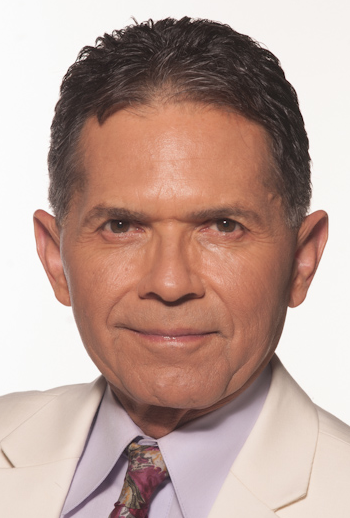Editor’s note: Amigos805 welcomes local guest columns, letters to the editor and other submissions from our readers. All opinions expressed in submitted material are those of the author and do not necessarily represent the viewpoint of Amigos805.
By David Magallanes • Guest contributor

David Magallanes
In my last article, I related that a world-renown Czech composer, Antonin Dvorak, had suggested in the late 19th century that Americans needed to turn to the African- and Native American musical traditions in our own country in order to lay a foundation for what could be called “American music.” He spent time in New York City and in Spillville, Iowa (a Czech-speaking community) and so would have been in contact with both of those foundational traditions. There was some backlash because of American racism at the time (which has certainly not disappeared over the past century). But if Dvorak had toured the Southwest a couple of decades later, he would certainly have been impressed by the incursion of Latin music in the United States. The roots of this music draw their energy from many corners of the world, including the Caribbean and African traditions, resulting in myriad forms of Latin music. Mexico, Cuba and Puerto Rico have heavily impacted our music, which long ago crossed over to the mainstream (consider Jennifer Lopez, Freddie Fender, Selena, Ricky Martin, Enrique Iglesias, just to name a few). Mariachi and “norteña” music brought about the Tejano sound, which in turn gave us the likes of Little Joe, Santana and Los Lobos. Chicano music influenced rock ‘n’ roll (we still play Ritchie Valens’ La Bamba).
A little-known fact about early Mexican American music is that in the mid-19th century, Germans, Poles and Czechs were migrating to Mexico and Texas, bringing their waltzes and polkas, which are a staple of northern Mexican and Texan music. This migration accelerated in the time of the Mexican Revolution, during the second decade of the 20th century, and greatly influenced the American musical landscape. Waltzes and polkas are big favorites on today’s dance floors all across our country, not to mention the rumba, salsa, cha-cha-cha, mambo, tango and bolero.
We Americans are privileged to host the music of so many world traditions in so many aspects of our lives—our concerts, dances, weddings, parties, on the elevator or in the supermarket, or simply listening at home. We have a musical tradition that has been reflected back to the countries of origin of our music as it spans the world and gives expression to the spectrum of our emotions, in good times and in bad, in our happy times, our sad times and even in our moments of anger. American music is a legacy that we share with the entire world.
— David Magallanes is a writer, speaker and professor of mathematics.
***
Influencias Latinas en la Música Americana
Por David Magallanes • Columnista invitado
En mi último artículo, contaba que un compositor checo de renombre mundial, Antonín Dvorak, había sugerido a fines del siglo XIX que los estadounidenses necesitaban recurrir a las tradiciones musicales africanas e indígenas en nuestro propio país para sentar las bases de lo que podría llamarse “música estadounidense”. Dvorak pasó un rato en la ciudad de Nueva York y en Spillville, Iowa (una comunidad de habla checa) y así habría estado en contacto con esas dos tradiciones fundamentales. Hubo algunas reacciones violentas debido al racismo estadounidense en ese momento (que por cierto no ha desaparecido en el último siglo). Pero si Dvorak hubiera realizado una gira por el Suroeste un par de décadas más tarde, seguramente se habría sentido impresionado por la incursión de la música latina en los Estados Unidos. Las raíces de esta música extraen su energía de muchos rincones del mundo, incluidas las tradiciones caribeñas y africanas, lo que resulta en innumerables formas de música latina. México, Cuba y Puerto Rico han tenido un gran impacto en nuestra música, que hace mucho tiempo pasó a la cultura dominante (considere a Jennifer López, Freddie Fender, Selena, Ricky Martin, Enrique Iglesias, solo por nombrar algunos). La música de mariachi y de las norteñas produjo el sonido tejano, que a su vez nos dio músicos como Little Joe, Santana y Los Lobos. La música chicana influyó en el rock ‘n’ roll (todavía se escucha La Bamba de Ritchie Valens).
Un hecho poco conocido acerca de la música mexico-americana temprana es que a mediados del siglo XIX, los alemanes, polacos y checos estaban emigrando a México y a Texas, trayendo sus valses y polcas, que son un elemento básico de la música del norte de México y de Texas. Esta migración se aceleró durante la época de la Revolución Mexicana, en la segunda década del siglo XX, y tuvo una gran influencia en el panorama musical estadounidense. Los valses y polkas son los grandes favoritos en las pistas de baile de todo el país, en dónde por supuesto la rumba, la salsa, el cha-cha-cha, el mambo, el tango y el bolero también se tocan.
Los estadounidenses tenemos el privilegio de albergar la música de tantas tradiciones mundiales en tantos aspectos de nuestras vidas: nuestros conciertos, bailes, bodas, fiestas, en el ascensor o en el supermercado, o simplemente escuchando en casa. Tenemos una tradición musical que se ha reflejado de vuelta en los países de origen de nuestra música, ya que abarca todo el mundo y expresa una gran variedad de nuestras emociones, en los tiempos buenos y malos, en nuestros ratos felices y tristes e incluso en nuestros momentos de ira. La música estadounidense es un legado que compartimos con todo el mundo.
— David Magallanes es un escritor, orador y profesor de matemáticas.
Editor’s note: Amigos805 welcomes comments on stories appearing in Amigos805 and on issues impacting the community. Comments must relate directly to stories published in Amigos805, no spam please. We reserve the right to remove or edit comments. Full name, city required. Contact information (telephone, email) will not be published. Please send your comments directly to frank@amigos805.com
